| |
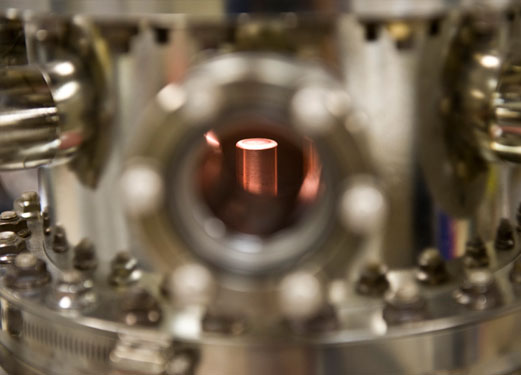
Entrance Point - A view through a docking chamber vacuum window. This is the first of five chambers that photocathodes must go through before making it into one of Jefferson Lab's photoemission electron guns. The copper pedestal at the center is one of four that each hold one photocathode. In Jefferson Lab's CEBAF accelerator, a photocathode emits the electrons that become CEBAF's electron beam. |
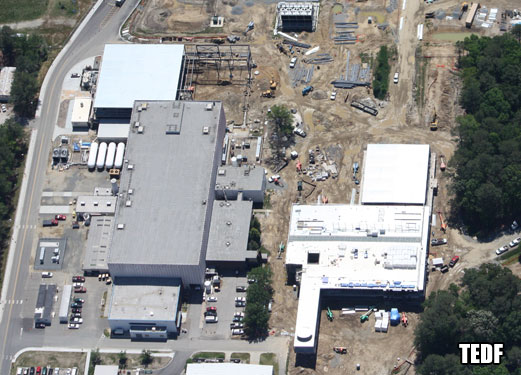
Hard Hats & Steel Toes - Construction is in full swing at Jefferson Lab. These three pictures, taken in May, show the lab's two biggest, ongoing construction projects: Hall D and its associated facilities on the northeast corner of the accelerator site and the Technology and Engineering Development Facility alongside the existing Test Lab. |
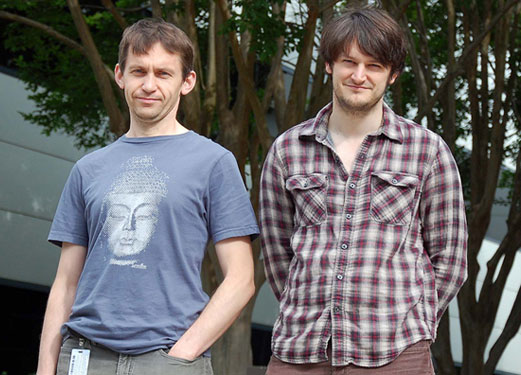
Early Award - Two scientists, Jozef Dudek and Pavel Evtushenko, have won highly coveted awards totaling $3.25 million from the U.S. Department of Energy, joining a select group of just 65 individuals, including 21 from national laboratories. The Early Career Research Program was created last year by the DOE's Office of Science to bolster the nation's scientific workforce by providing support to exceptional researchers during their early career years, a crucial time when many scientists do their most formative work. Click here for more... |

Industrial Green - This giant bag may not look green, but it keeps a potent greenhouse gas from being released into the atmosphere. It's part of a system at the Free-Electron Laser that retains sulfur hexafluoride gas when it isn't being used in the FEL's gun test stand. The concept received a 2011 Virginia Governor's Environmental Excellence Program Gold Award. |
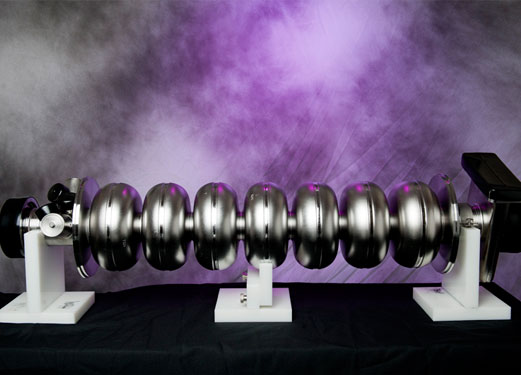
Superconductivity Centennial - Friday, April 8, marks 100 years since Heike Kamerlingh Onnes discovered the basis for CEBAF's success: superconductivity. Superconducting radiofrequency accelerator cavities, like this one, harness the energy that the CEBAF accelerator pumps into its electron beam for nuclear physics research. SRF cavities are typically made of niobium, a metal that becomes superconducting at extremely low temperatures. |
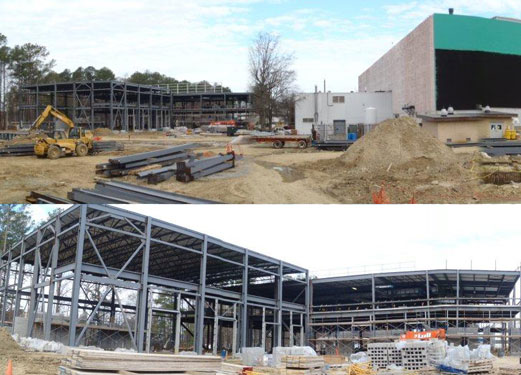
TEDF Takes Shape - The construction of Jefferson Lab's Technology and Engineering Development Facility continues. The project will provide state-of-the-art facilities for research in the areas of nuclear physics, accelerator science, applied nuclear science and technology, and advanced superconducting radiofrequency instrumentation. Once complete, TEDF will provide a 70,000-square-foot Technology and Engineering Development building (left of the existing Test Lab) and will modernize and provide a 30,000-square-foot addition to the Test Lab.. |
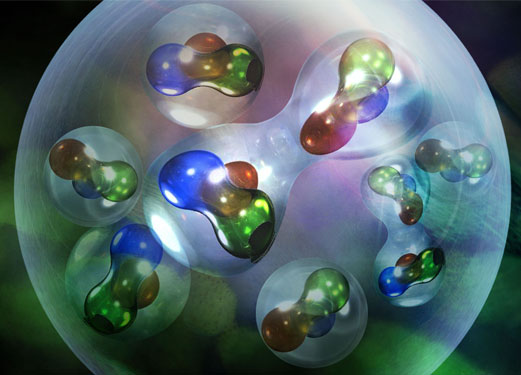
Unexpected Connection - Some experiments seem to show that the building blocks of protons and neutrons inside a nucleus are somehow different from that of free neutrons and protons. Other experiments show protons and neutrons behave differently when they pair up. A new study shows these two different lines of research are correlated, leading to information on the internal structure of free neutrons without the assistance of a theoretical model. |
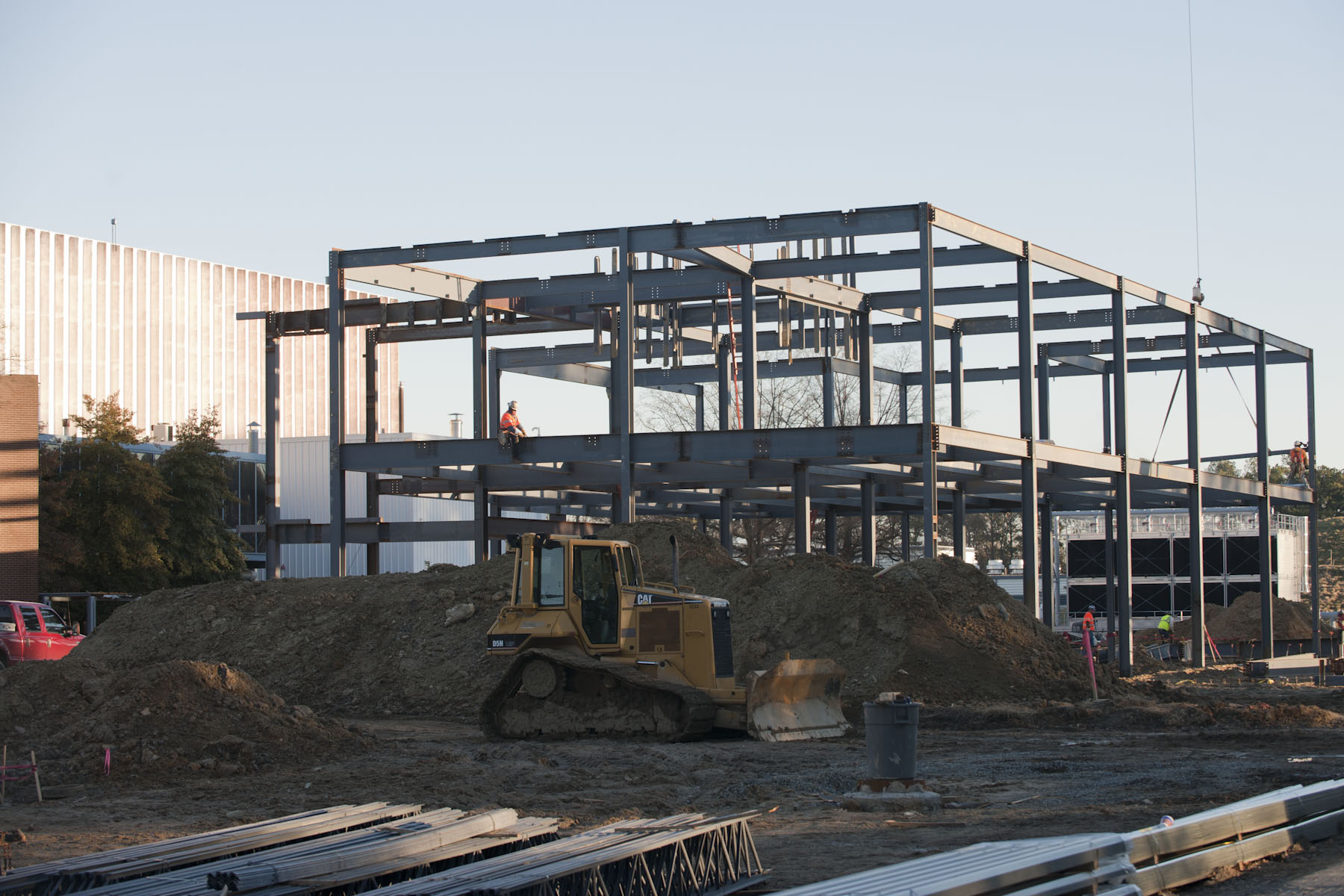
TEDF Takes Shape - - The steel frame for the Technology and Engineering Development Building is taking shape. TheTEDF project will add a 70,000-square-foot TED building and 30,000 square feet to the Test Lab building (left). The Test Lab also will be renovated. TEDF will provide state-of-the-art facilities for research in the areas of nuclear physics, accelerator science, applied nuclear science and technology, and advanced superconducting radiofrequency instrumentation. |
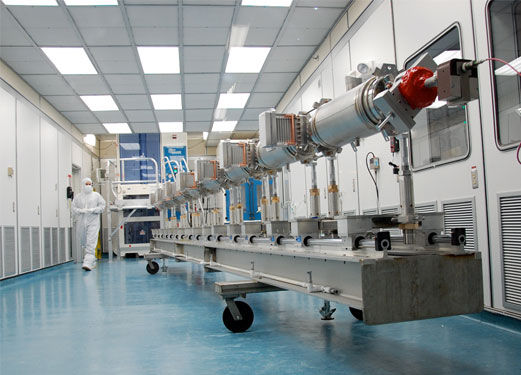
Moving Forward - New components to be added to Jefferson Lab's CEBAF accelerator as part of the 12 GeV Upgrade have been manufactured, encased and rolled out for further assembly. This "string" of components will become the heart of a cryomodule, which will be added to the lab's particle accelerator in 2012.
|